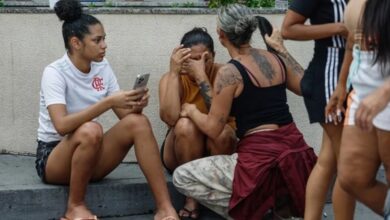Women’s football financing is still in diapers
After the controversy in FC Barcelona, we wonder how the situation of professional soccer players in other countries is

Last month, FC Barcelona promoted the first joint tour through the USA. The tour was attended by both male and female teams, so this could be seen as a step towards gender equity in sport; however, it was not the case.
Leer en español: Fútbol y mujeres: ¿cómo es la financiación de los equipos femeninos en Latinoamérica?
The trip immediately generated controversy, since the male team traveled in the business category while the female group did it in economy class. Even more worrisome was that, Alexia Putellas, Barcelona’s player, said that "it's a long trip, but I wish we would always travel in these conditions", because according to the newspaper El Español, until recently, the players had to make long bus trips to attend their games.
How is the situation of female soccer players in other countries?
In Brazil
According to the DW portal, in Brazil, where football is an important cultural activity, one of the main problems of the world of sports is the lack of economic support for women's football.
Also read: These 5 Latin American players increased their value after the World Cup
Caitlin Fisher, a former Santos FC player, says that "the only thing we have in common with the men's team is the shield, we had to wear the shirts that the players wear eight years ago." After retiring from football, Fisher started working for the FIFPro world players union that established its first committee for women's football at the end of 2014.
The ex-player says that "in terms of women's football, FIFPro is still in its infancy, but building solidarity and a collective voice to protect the rights of the players is our main goal."
In Colombia
In the coffee nation, according to the Colombian Football Federation, more than 14,000 million pesos are invested in all 12 national teams (including the sub 17, sub 20 and other soccer divisions). However, of those 14 billion, 72 percent is destined for the men's team, leaving the remaining 3900 million pesos to distribute among the other teams.
In Argentina
The newspaper La Izquierda states that in Argentina, where football is almost a religion, the female players are not economically supported by the clubs and only have the annual budget granted by FIFA for training and different competitions.
This newspaper also claims that "the players do not charge salaries or per diem and are also relegated to training at night, some do so at midnight, since they do not have an adequate place at central hours, according to the national reality where have increased cases of disappearances and femicides".
You may also be interested in: Pink Tax: The hidden rate that women must pay
In the rest of the world
The outlook outside of Latin America is not very different, two years ago, the players Hope Solo, Carli Lloyd, Becky Sauerbrunn, Megan Rapinoe and Alex Morgan presented before the Equal Employment Opportunity Commission a lawsuit against the US national team for discrimination. The players claimed that they earned 40% of the winnings of the male players. They also denounced that they were not paid bonuses.
According to The New York Times, "a male player receives $ 5,000 dollars for a game lost in a friendly match and up to $ 17,625 dollars for a victory against a large opponent. In contrast, a player receives 1,350 greenbacks for a similar match, but only if they win; the women's team does not receive bonuses for losses or draws".
Similarly, according to DW, last year it was known that in Ireland women's football teams were not allowed to use the training courts or the team buses.
LatinAmerican Post | Sofía Carreño
Translated from “Fútbol y mujeres: ¿cómo es la financiación de los equipos femeninos en Latinoamérica?”





